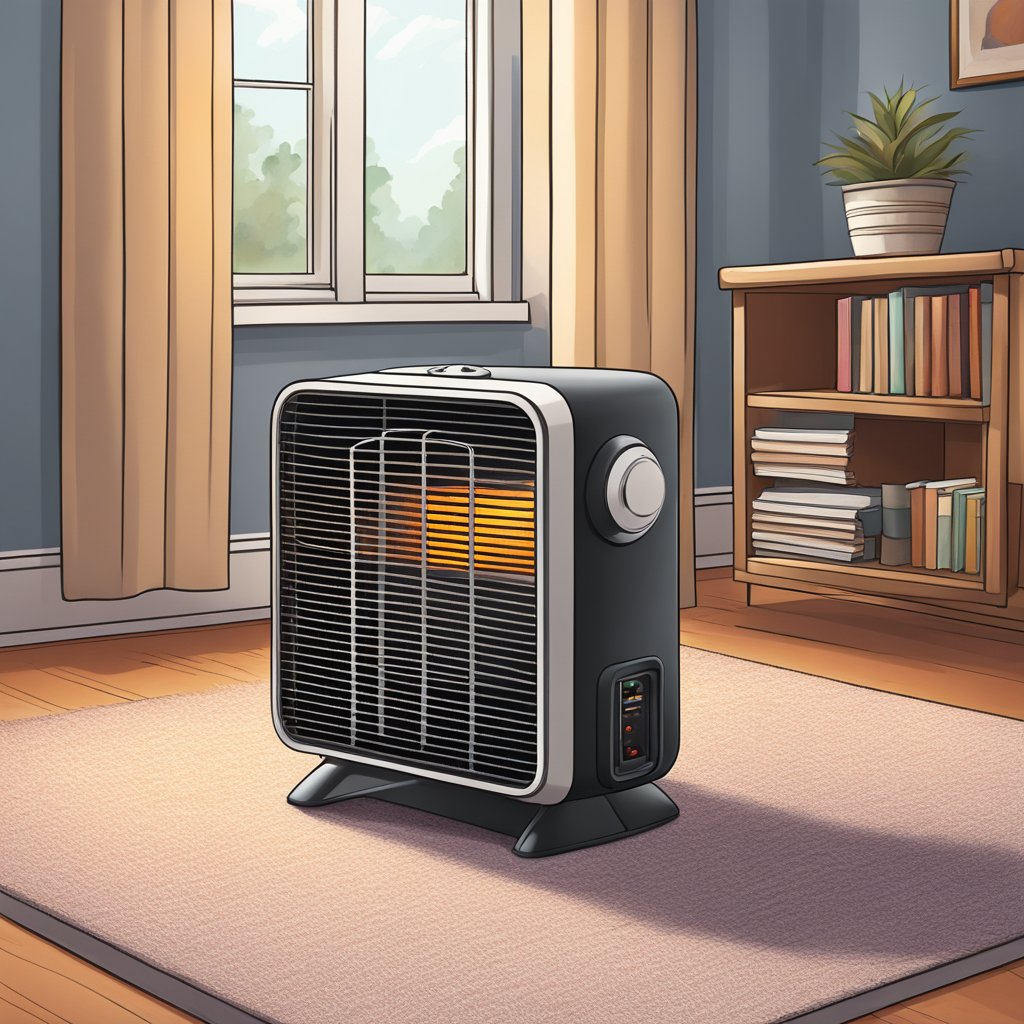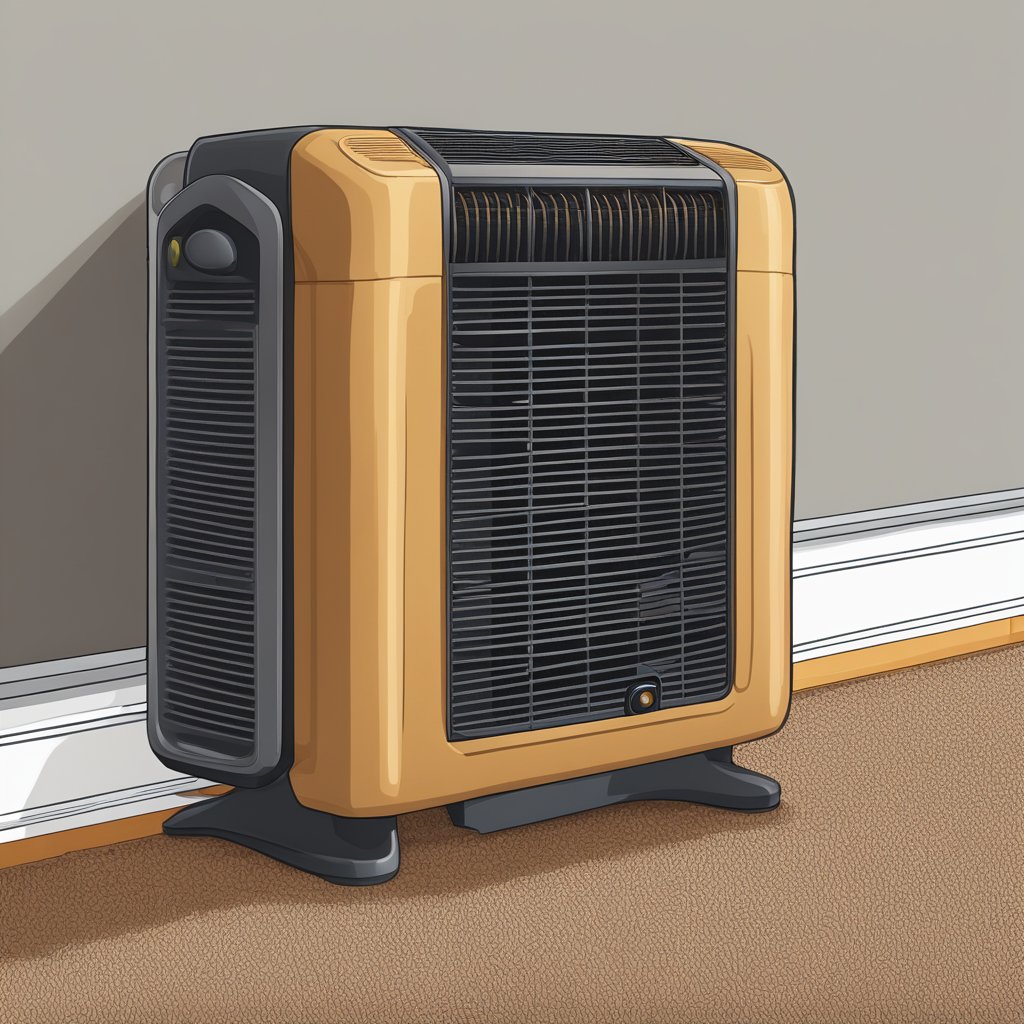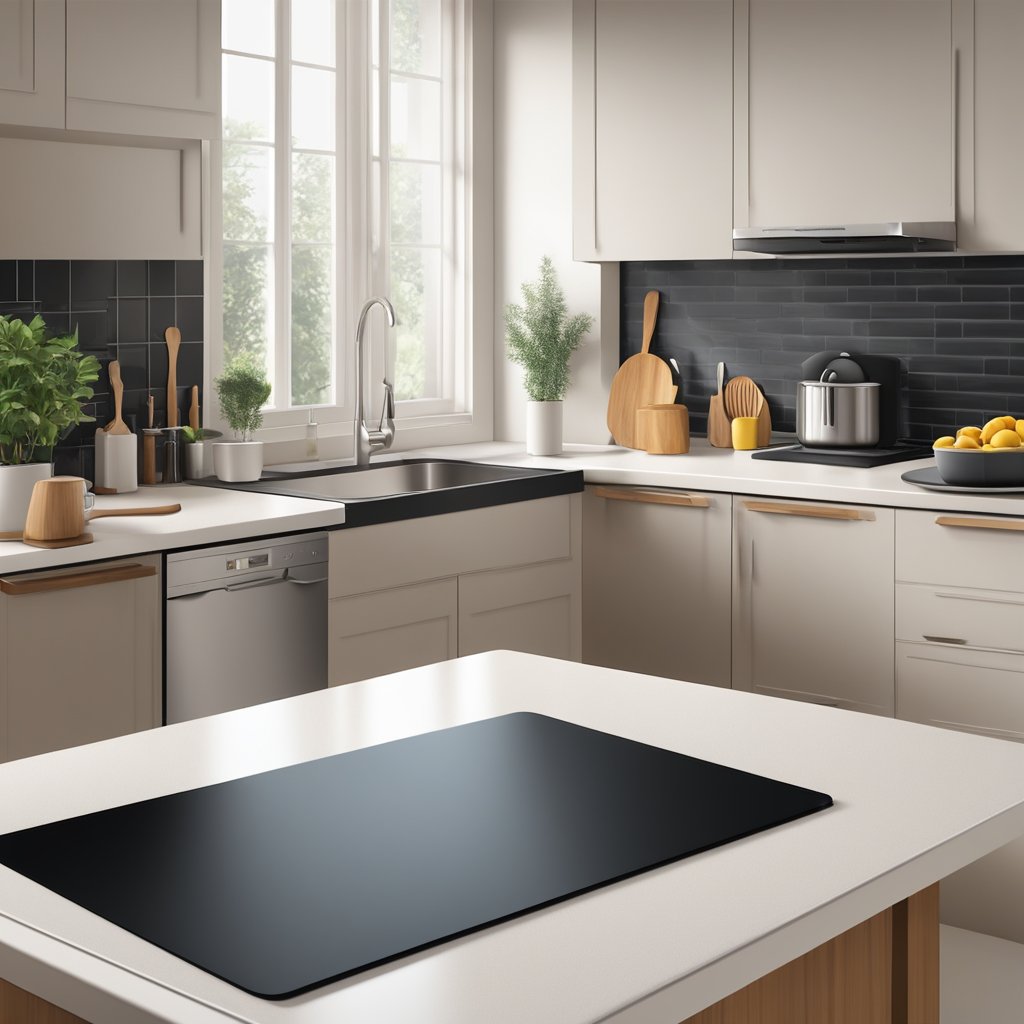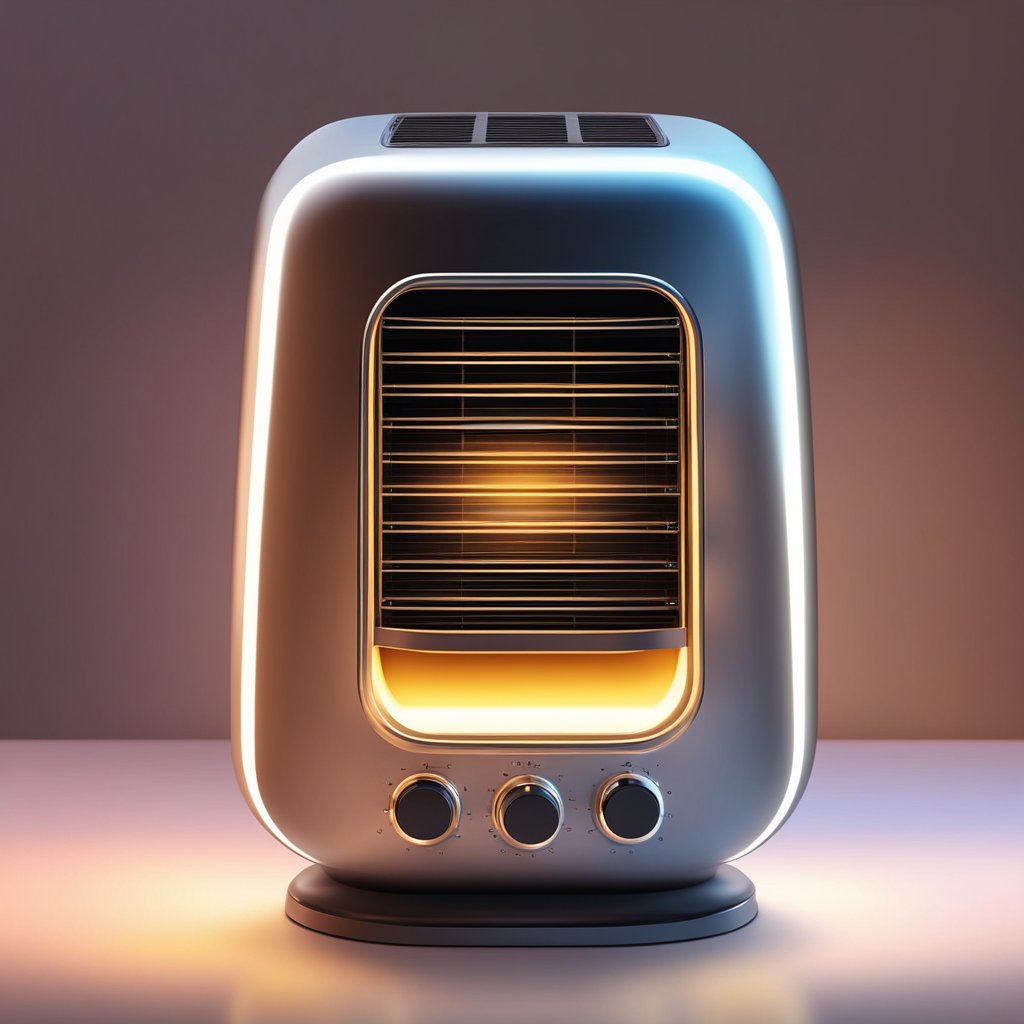Is it Safe to Place a Space Heater on Carpet? (With Safety Features & Alternatives)
As winter approaches, many turn to space heaters for warmth. But if you’ve got carpeted floors, you might wonder: “Can I put a space heater on carpet? Is it safe?”
Yes, you can use a space heater on carpet, but it’s essential to be cautious. Key safety concerns include the risk of carpets overheating, heaters toppling over due to uneven carpet surfaces, and potential electrical dangers. To ensure safety, it’s recommended to choose a carpet-safe space heater, maintain adequate distance from flammable items, and consider placing the heater on a hard surface as a buffer.
Regular inspection of the heater and awareness of signs indicating issues, such as unusual smells or visual smoke, are also crucial. Alternatives like wall-mounted heaters or heat-resistant mats can provide additional safety measures.
Can You Use a Space Heater on Carpet? Overview of Safety Concerns
Potential Hazards
- Overheating Carpets: Carpets, especially those with thick piles, can trap heat. When a space heater is placed directly on such surfaces, there’s a risk of the carpet overheating, which might lead to discoloration or, in extreme cases, combustion.
- Toppling Risks: Carpets can be uneven or soft, making it easier for space heaters, especially tall or narrow ones, to topple over. A fallen heater is a fire risk, especially if left unattended.
- Electrical Concerns: Frayed carpet edges or older carpets might expose wiring or be a tripping hazard, leading to accidental unplugging or damage to the heater’s cord.

Safety Guidelines and Best Practices
- Choose a Carpet-Safe Space Heater: Some heaters are specifically designed with a flat, stable base suitable for carpeted surfaces. Always check the manufacturer’s guidelines before making a purchase.
- Maintain Distance: Ensure there’s adequate space between the heater and surrounding objects. This reduces the chances of objects (like curtains or furniture) coming into contact with the heater.
- Use a Hard, Flat Surface: If you’re unsure about placing the heater directly on the carpet, use a hard, flat surface like a ceramic tile or a piece of hardwood beneath the heater as a buffer.
- Automatic Shut-Off Feature: Opt for heaters with an automatic shut-off feature. This ensures the heater turns off if it’s tipped over, reducing potential risks.
- Regularly Inspect the Heater: Before use, always inspect the heater for any damage, especially to the cord. Also, ensure the heater is clean, as accumulated dust can pose a fire risk.
Remember, while many ask, “Can you use a space heater on carpet?”, the emphasis should always be on safe and informed use.
Signs of a Problem: When to Stop Using Your Heater on Carpet
Safety should always be paramount when using electrical devices, especially heating units that are placed on potentially flammable surfaces like carpets.
Here are some tell-tale signs that there may be a problem with your space heater when placed on carpet:
- Unusual Smells:
- If you start to detect an unfamiliar burning or plastic-like odor when the heater is on, it’s an immediate red flag. It could indicate overheating components, burning dust, or even the carpet starting to scorch.
- Visual Smoke or Fumes:
- Even a tiny wisp of smoke emanating from the heater should be taken seriously. It’s a precursor to a potential fire hazard. Disconnect the unit immediately and inspect it before further use.
- Overheating:
- If the area around the heater, especially the carpet underneath, becomes unusually warm or hot, it’s an indicator that the heater might be malfunctioning or is unsuitable for carpet placement.
- Changes in Heater Behavior:
- Fluctuating power levels, sudden shut-offs, or inconsistent heat output can indicate internal issues. Such behaviors demand immediate inspection and, possibly, repair.
- Discoloration of the Carpet:
- If you notice the carpet’s color fading or changing in the area beneath or around the heater, it might be receiving too much heat, leading to potential damage or fire risk.
- Melting or Warping of Heater Base:
- The heater’s base should always remain intact and in its original shape. Any warping, melting, or deformation suggests an internal problem and an elevated risk when used on carpet.
- Audible Anomalies:
- Strange sounds like popping, crackling, or buzzing coming from the heater aren’t normal. Such sounds can indicate electrical issues or parts malfunctioning.

The Importance of Immediate Action: Taking prompt action upon noticing any of these anomalies is crucial. It not only ensures the longevity of your heater but also prevents potential hazards:
- Disconnect the Heater: If you suspect any issue, the first step should always be to unplug the unit.
- Inspect the Area: Check the carpet and surrounding area for any visible signs of damage or distress.
- Seek Professional Advice: If you’re unsure about the heater’s condition, it’s always best to consult with a professional or the manufacturer before using it again.
- Regular Maintenance: To avoid such problems, make sure you clean and maintain your heater as per the manufacturer’s guidelines.
Ensuring the safe operation of your space heater on carpet is crucial for the well-being of everyone in your home. By staying vigilant and responsive to these signs, you’ll enjoy warmth without compromising safety.
Alternatives to Placing Your Heater on the Carpet
While placing a space heater directly on a carpet is not always recommended due to potential safety risks, there are several alternatives that can ensure both efficient heating and optimal safety.
Here are some viable options:
- Heat-Resistant Mats or Stands:
- These are specially designed to withstand high temperatures and can act as a barrier between the heater and the carpet. By placing your heater on these mats or stands, you can significantly reduce the direct heat transfer to the carpet, ensuring a safer environment.
- Wall-Mounted Space Heaters:
- If floor space is a concern or you’re looking to avoid carpet contact altogether, consider wall-mounted heaters. These devices are fixed to walls, keeping them elevated and away from floor surfaces. They not only save space but also eliminate risks associated with floor placements.
- Elevated Platforms or Designated Spaces:
- If you’re hesitant about placing your heater directly on the carpet, consider using an elevated platform, such as a sturdy table or a designated wooden or metal stand. This ensures that heat is distributed without direct contact with the carpet. When selecting a platform, ensure it’s stable and can handle the heater’s weight without tipping.
- Under-Desk Heaters:
- These are perfect for office spaces or workstations. Designed to fit snugly under desks, they ensure your legs and feet stay warm while keeping the heater off the carpeted floor.
- Ceiling-Mounted Heaters:
- Similar to wall-mounted units but fixed to the ceiling, these heaters are great for larger rooms where even heat distribution is essential. Being high up, they pose no risk to carpets and offer an aesthetically pleasing heating solution.
- Radiant Floor Heating:
- If you’re looking for a more permanent solution, consider installing radiant floor heating. It provides even, consistent warmth across the room, eliminating the need for space heaters altogether. Though the initial investment is higher, it offers a safe and efficient heating method for carpeted spaces.

Exploring these alternatives can help you enjoy the coziness of a warm room without compromising on safety or aesthetics. Remember, the key is to choose an option that best suits your needs and the layout of your space.
Choosing the Right Space Heater for Carpeted Rooms
Which type of space heater is best for carpet
- Convection Heaters: These heaters warm the air in the room. They are generally quieter and suitable for larger spaces but should be used with caution on thick carpets due to their bottom heat vents.
- Radiant Heaters: More direct in their approach, radiant heaters warm objects and people in their path. They heat up quickly and are ideal for smaller rooms or personal spaces.
- Infrared Heaters: Operating silently, these heaters use infrared rays to heat objects and people. They’re energy-efficient and don’t dry out the air but should be positioned with care on carpets.

Which Space Heater Features Are Important for Carpet
- Tip-Over Protection:
- This feature ensures that if the heater is knocked over, it will automatically shut off. Given the plush nature of some carpets, this feature is crucial to prevent potential hazards.
- Overheat Protection:
- The heater will automatically shut off if its internal components reach an unsafe temperature. This safety feature prevents potential fires and overheating damage.
- Cool-Touch Exterior:
- Look for heaters that have a cool-to-touch exterior. This ensures that even if the heater is on for an extended period, the outer surface remains cool, reducing the risk of burns upon accidental touch.
- Adjustable Thermostat:
- An adjustable thermostat allows you to set a desired room temperature. Once the room reaches this temperature, the heater will cycle on and off to maintain it, ensuring energy efficiency and preventing excessive heat build-up.
- Programmable Timer:
- A timer allows you to set how long the heater should run. This is especially useful if you want the heater to shut off automatically after a certain period, ensuring it doesn’t run unnecessarily when you forget to switch it off.
- Remote Control:
- A remote control adds an element of convenience, allowing you to adjust settings without having to approach the heater. It’s particularly handy if you place the heater in a corner or a hard-to-reach spot.
By focusing on these features, you can find a space heater that is not only safe for use on carpet but also aligns with your specific needs and preferences.
Safety Tips for Using a Space Heater on Carpet
Proper Placement
Ensure at least 3 feet of space between the heater and flammable items, including furniture, curtains, and other fabrics.
Place the heater on a flat, even part of the carpet to avoid tipping. If your carpet is particularly plush or uneven, consider placing a stable, non-flammable base beneath the heater.
Monitoring and Supervision
- Never Leave Unattended: Always turn off the heater when leaving the room or going to bed. Avoid using it as a primary overnight heating source.
- Children and Pets: Ensure that children and pets stay away from the heater. Their movements can be unpredictable, and they may inadvertently knock the unit over.

Maintenance and Care
Frequently inspect the heater’s cord for any signs of damage or wear. A compromised cord can be a fire hazard.
Keep the heater clean and free of dust. Not only will this make the heater more efficient, but it will also reduce the risk of fire.
Power Considerations
- Avoid Extension Cords: If possible, plug the heater directly into a wall outlet. If you must use an extension cord, ensure it’s heavy-duty and rated for the heater’s power requirements.
- Circuit Overload: Don’t plug in other high-wattage devices into the same circuit as the heater. Overloading can lead to overheating and potential fire hazards.
Environment and Airflow
- Ventilation: Ensure the room has adequate ventilation. While most space heaters are safe, a well-ventilated room ensures any potential overheating dissipates more effectively.
- Avoid Wet Areas: Never use a space heater in damp or wet areas unless it’s specifically designed for that environment. Moisture can damage the heater and increase the risk of electric shocks.
By following these safety guidelines, you can enjoy the cozy warmth of a space heater in your carpeted room without unnecessary risks.
Check Out Our Complete Guide to Space Heaters!
If you enjoyed this post, check out our complete guide to space heaters for more information on space heater types, safety features, troubleshooting common issues, and how to choose the right space heater for your needs!
Let Us Know How We’re Doing!
Did this expertly prepared resource answer your question?
Do you have another question about home maintenance, home improvement projects, home appliance repair, or something else?
Get more information, send in questions and keep the discussion going by contacting the I’ll Just Fix It Myself company customer service team at at 1-800-928-1490 or Email us at [email protected]
